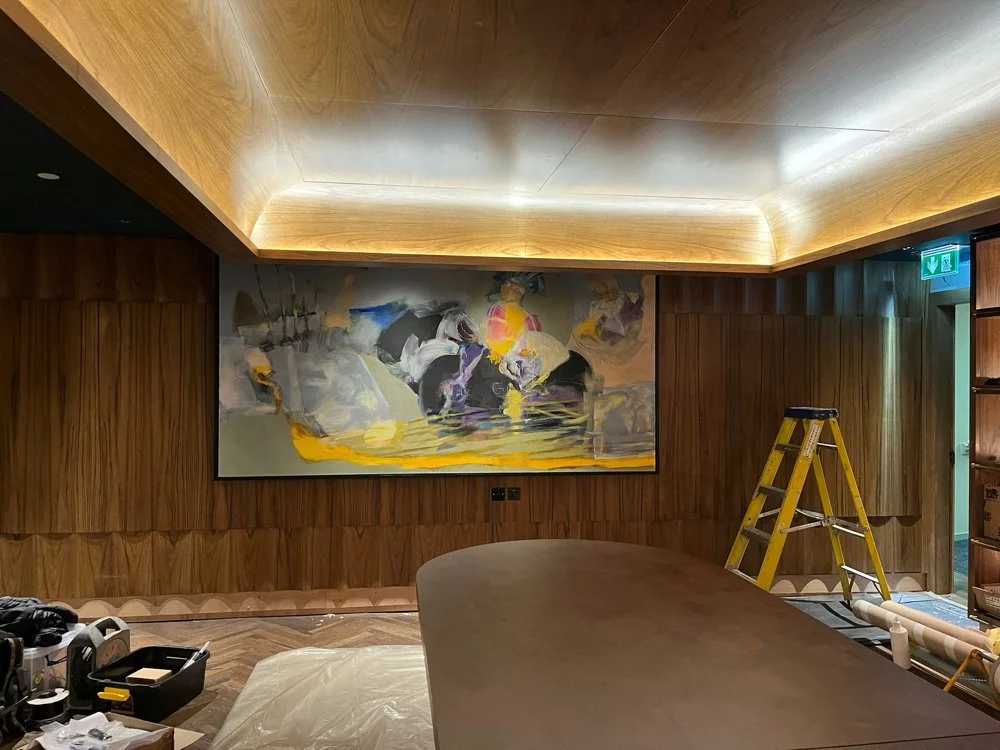Gymnós
In recent weeks I have been taken up with a commission - the biggest painting on canvas I have ever tackled. The dimensions are 2765mm by 1442mm. I do like having a free hand in devising an image and composition and this was just such a situation. The piece was destined for the private dining room of the restaurant Wild Honey in the Sofitel in St James in London. I have named the piece Gymnós and here is the story.
The painting title Gymnós is a Greek term meaning naked, unclad, stripped, unarmed or without armour.
In this archetypal scene are two figures. The title Gymnós refers to the main figure and suggests (allegorically) the vulnerability of each and every hero at the outset of his journey/quest in the world. The nod in this case is to Anthony Demetre, chef, entrepreneur and powerhouse behind the enterprise which is Wild Honey.
The second figure is based on the myth of Teucer (the bastard archer). Teucer fought alongside his half brother Ajax in the Trojan wars. Specifically he sent his arrows out from behind the massive shield of Ajax (the hero) and, as a fighting duo, they were instrumental in the Greek triumph at the Trojan War. In this painting Teucer represents all those who have the hero’s back.
After the war, Teucer was exiled from Greece. He settled in Cyprus where he was the legendary founder of the city Salamis. The remains of a gymnasium built by the Greeks on Cyprus are today still clearly defined. Fragments from the ruins are depicted in the painting as the arena for this imaginary scene. For the Greeks, a gymnasium was a place used for the training of elite sportsmen, and a space also intended for social and intellectual exchange.
In the imagination of the artist, ghosts of culinary creations emanating from Wild Honey are etched into the marble floor - paving the way through from beginnings in Demetre’s world of cuisine right on into the future.
References portrayed here, and personal to this hero in particular, include Cypriot and French family connections, The Tour de France, Aston Villa colours, Hakaasan gin and tonic (“The best” according to chef Demetre) and the beehive emblem. The skep (an early beehive) was adopted as emblem by Lloyds bank long before any association with a black horse. The skep logo was used in many ways including on banknotes as a symbol of thrift and hard work. Wild Honey the restaurant is located in the Sofitel in St James, London.
I added in a bee, a perfect wee bee - doing what bees do, but toting with her all the significance that bees carry through mythology.
Across cultures, they represent prosperity, transformation, cooperation, fertility, and divine connection to the natural world. From Ancient Egypt to Celtic traditions, bees have been seen as messengers between worlds, guides of the soul, and enduring emblems of balance and renewal.
The painting now has a life and somewhat unique function all of its own. It is mounted in a discreet mechanism which can roll it away from its position on the restaurant wall, to reveal a flatscreen the same size. It then rests on the wall beside the screen waiting for its stately repositioning once the screen is no longer in use. Not my idea - ingenious.

